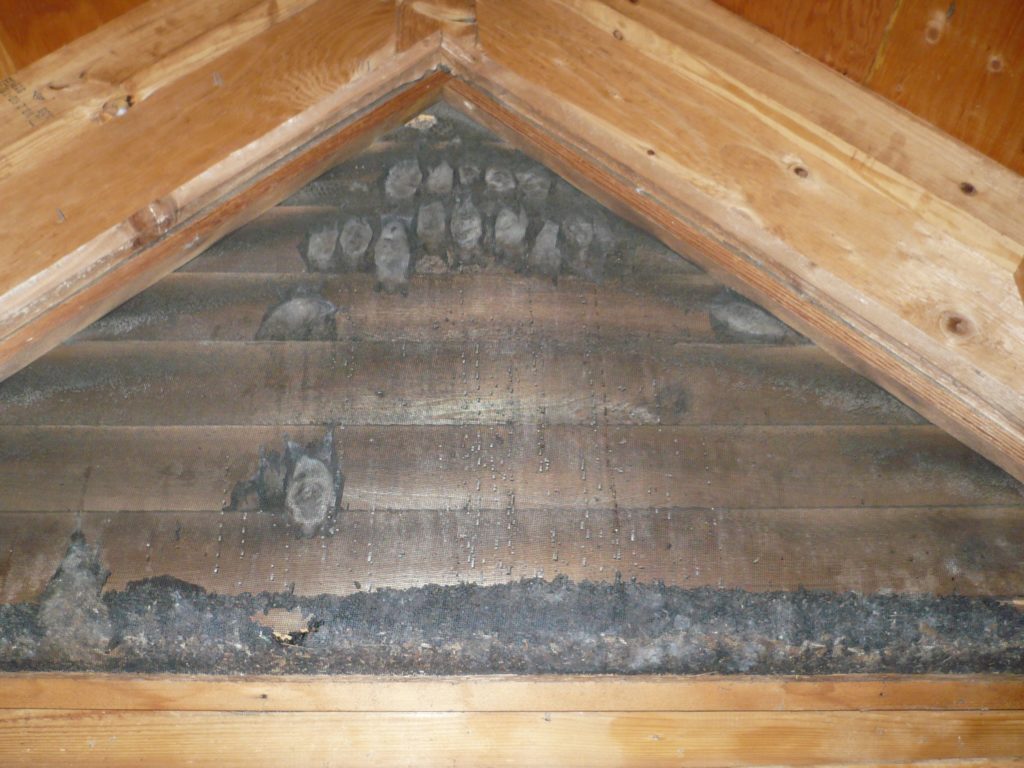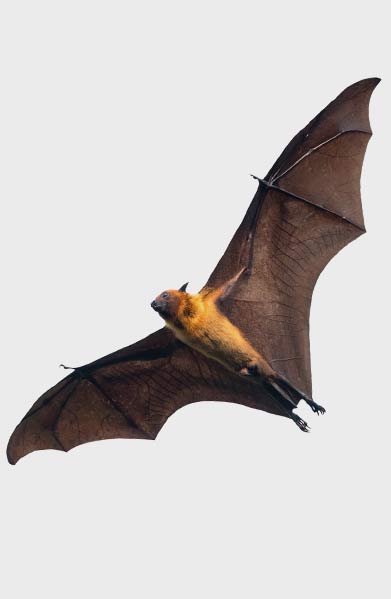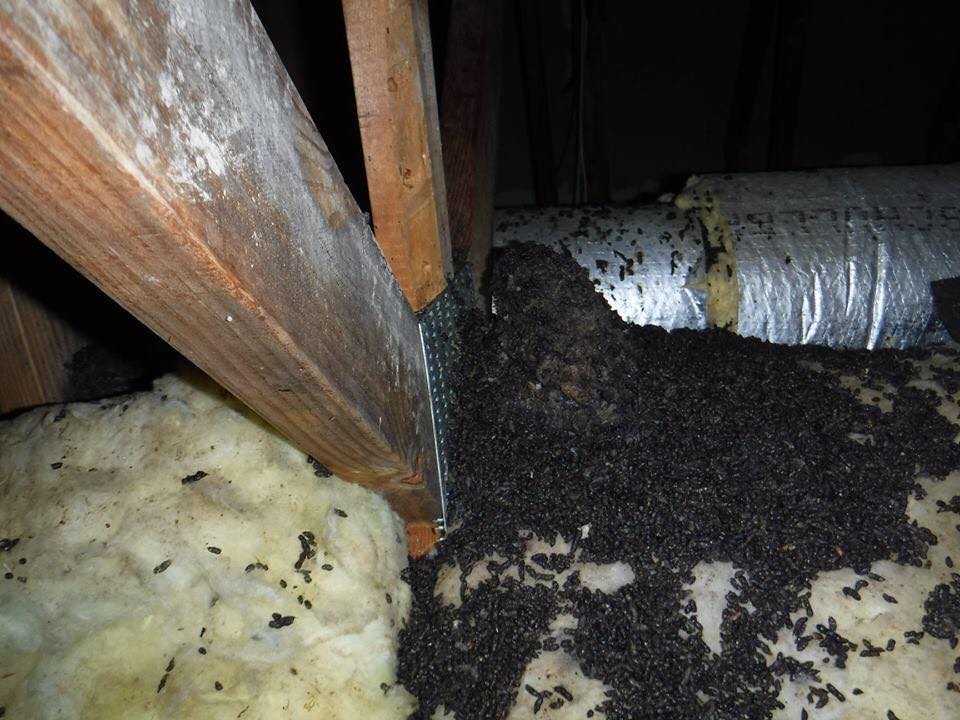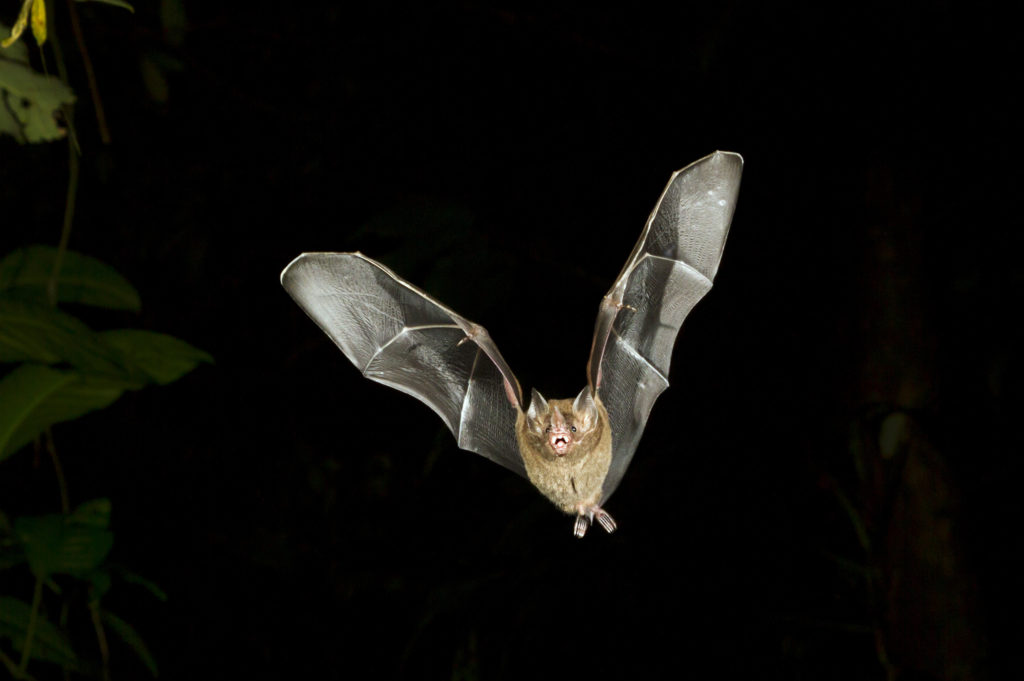There are over 900 species of bats worldwide, and even though they’re commonly referred to as rodents, bats are actually mammals (the only mammals that fly). The two most common mid-Atlantic species of bats are the Little Brown Bat and the Big Brown Bat. No matter the species we provide bat pest control services. You don’t want them in your home or your vacation house in Rehoboth. We are proud to serve the people of coastal Delaware including Seaford, Dewey, Bethany Beach, Lewes, Rehoboth, and Fenwick. We also serve parts of Maryland including Ocean City, Salisbury, Easton, St. Michaels, Oxford, Queenstown, Centerville, and many others.

Depending on how many bats you have in your home, you may not notice them, as small colonies can go unnoticed for some time. Many bats will choose to nest near a body of water because of all the insects they can feast on. If you’ve noticed bats flying around your home then start looking for these signs:
Of course if the bats have left your attic for your living room, then you need to get some emergency bat removal services immediately. You don’t want to allow the bats to remain in the primary areas of your home for long.

Once you’ve confirmed you have bats in your home, the next step is to figure out how to remove them. Here is where you can benefit from the services of a bat removal specialist. Bats are a necessary part of the ecosystem, and we understand that (it’s why we’re dedicated to non-harmful removal methods), but they are not great for your home.
To begin the bat removal process, we first need to perform a thorough inspection of your home/building to determine precisely where the bats are getting in. Next, we will want to “exclude” the bats. Trapping bats is difficult and dangerous, but the process of exclusion allows the bats to fly out on their own accord. All entrances will be blocked and once all the bats are gone the home will be completely sealed, preventing any future returns. The final step is cleaning and sanitizing. Bats tend to leave behind large quantities of their guano, and it all needs to be completely cleaned, or else diseases and microorganisms could fester in your attic.

Whether you know you have bats, or if you only have a suspicion, we’re here to help you. We have been providing emergency bat removal services, as well as standard bat removal services to all of the mid-Atlantic for years. If you need bat removal services, or just have any questions, feel free to give us a call today. We would be more than happy to help you day or night.
Let Us Get the Critters Out
Request a Consultation
We already mentioned some of the dangers of bat removal, but we wanted to stress these dangers again. Despite their size, bats can pack quite a punch. They have been known to attack people under certain situations and can carry dangerous diseases such as rabies or SARS (severe acute respiratory syndrome). We wanted to just take some space here and outline some of the specific dangers of bats.
Guano can be extremely dangerous and harmful, as it can allow diseases to seep throughout your home. Histoplasmosis, commonly referred to as cave disease, is a respiratory condition that can result from being exposed to bat droppings. It is a fungus and infects you by breathing microscopic spores. It can cause headaches, breathing problems, muscle aches, chills, fevers, etc. For this reason, it is recommended that the cleanup be left to professionals.
There actually are no officially registered bat repellents. There are some repellents on the market, but none of them work. The same goes for the high-pitch noisemakers, the FTC has even issued a warning against them. There is no quick fix to a bat problem, your best bet is to hire a bat removal specialist.
If you’d like to avoid this bat problem altogether, then you need to make sure every hole in your home is plugged. Bats commonly get into the attic through gabble vents and gaps along the roof line. Bats can squeeze through even some of the smallest holes, so you need to make sure every single little hole is covered up or sealed. Bats in the attic is a more common problem then you think. Often times we’ve found that homeowners will attempt this process themselves, only to find that they missed a hole, allowing bats to get in. We’ve sealed up countless homes over the years and we can help you seal yours too.
If you’re looking to have bats removed from your home, Bay Area
Wildlife, located in Seaford, DE, can help. Our animal removal
specialists will safely remove unwanted bats from your house or
property. Call us for responsive, expert service. Our thorough service
for bat removal will provide you peace of mind.
Let Us Get the Critters Out
Request a Consultation
Unlike other types of animals, bats can be extremely difficult to get rid of. This is due not only because of the bats’ behaviors, but also because of laws and regulations. Government laws prohibit the relocation or killing of bats in any situation, which means that, unlike a raccoon or squirrel, you can’t just trap it and take it outside. The only thing you can do is attempt to use a one-way exclusion door to prevent bats from entering your house in the first place. This is a very complex matter, and should be left for a professional to handle due to the number of complications and risks for injury involved.
If you absolutely have no choice but to do it yourself, there are several things you need to know beforehand.
One-way exclusion doors are placed over entryways used by bats. The doors allow bats to safely exit your house, but not get back in. Every night bats go out to eat and drink, which means you have a window of opportunity to use an exclusion door, where you can drive out the bats naturally and prevent them from ever returning. However, this is not as simple as it sounds due to a variety of issues.
Baby bats tend to be unable to leave the roost. Bat colonies can have hundreds of babies that do not have the capability to fly out yet. This is a problem, because if they are left behind while an exclusion door is used, their parents will be unable to return to care for them. This will result in frantic bat mothers harassing your house in a desperate attempt to get back in while their children slowly starve to death. Needless to say, a pile of hundreds of dead bat babies is horrible to deal with and extremely hazardous to your health.
Aside from baby bats, there is also the issue of injured or lost bats that may be left behind when the group leaves for the night. They can also cause more complications further down the line, similar to the baby bats. In addition, bats remember good roosting spots, and thus are likely to return next year. If all entry holes are not properly closed up during this time, then you’ll be back at square one.
Again, killing, poisoning or attempting to trap the bats is a crime and will result in criminal prosecution.
Let Us Get the Critters Out
Request a ConsultationSussex County Animal Removal: Bethany Beach, Bethel, Blades, Bridgeville, Dagsboro, Delmar, Dewey Beach, Ellendale, Fenwick Island, Frankford, Georgetown, Greenwood, Henlopen Acres, Laurel, Lewes, Long Neck, Milford, Millsboro, Millville, Milton, Ocean View, Rehoboth Beach, Seaford, Selbyville, Slaughter Beach, South Bethany
Kent County Animal Removal: Bowers, Camden, Cheswold, Clayton, Dover, Farmington, Felton, Frederica, Harrington, Hartly, Houston, Kenton, Leipsic, Little Creek, Magnolia, Milford, Smyrna, Viola, Woodside, Wyoming
Talbot County Animal Removal: Easton, Oxford, Saint Michaels, Trappe
Queen Anne’s County Animal Removal: Centerville, Queenstown
Caroline County Animal Removal: Denton, Federalsburg, Goldsboro, Greensboro, Henderson, Hillsboro, Marydel, Preston, Ridgely, Templeville
Dorchester County Animal Removal: Brookview, Cambridge, Church Creek, East New Market, Eldorado, Galestown, Hurlock, Secretary, Vienna
Wicomico County Animal Removal: Delmar, Fruitland, Hebron, Mardela Springs, Pittsville, Salisbury, Sharptown, Willards
Worcester County Animal Removal: Berlin, Bishopville, Girdletree, Newark, Ocean City, Ocean Pines, Pocomoke City, Snow Hill, Stockton, West Ocean City, Whaleyville